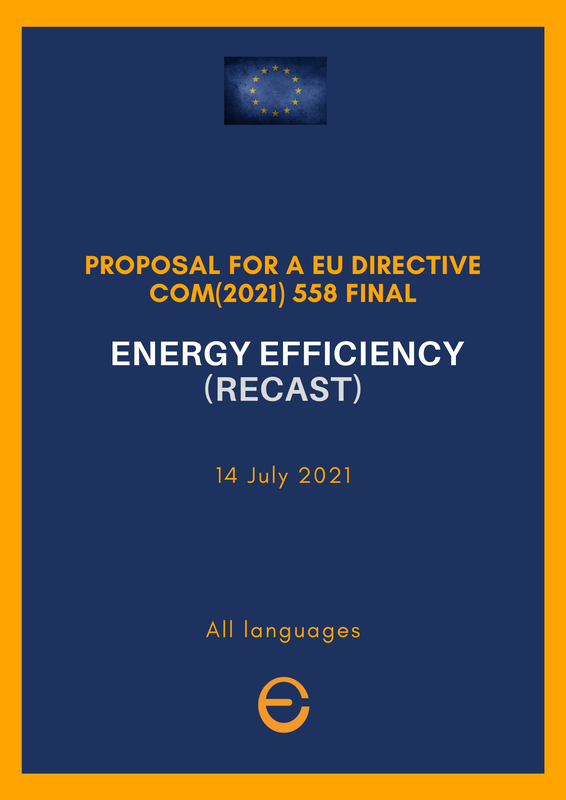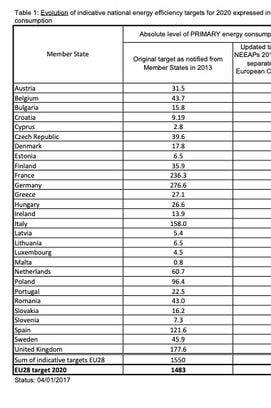|
Brussels, |
|
Energy Efficiency Legislation
Energy efficiency is a cumulative implementation of specific measures promoting energy efficiency in different fields. The proportion between the final and the primary energy consumption is just one aspect that reflects the efficiency of an energy system. By 2050, the objectives include significantly reducing greenhouse gas emissions, with an emphasis on achieving a climate-neutral economy. This involves not only the reduction of emissions through increased energy efficiency but also through the integration of renewable energy sources into the grid, enhancing the sustainability of the energy sector.
Energy efficiency measures are expected to be implemented across various sectors, including industrial, residential, transportation, and public services. These measures may involve the adoption of more efficient technologies, improvements in building insulation, the promotion of electric vehicles, and the optimization of energy use in industrial processes.
The goal is to create a balance where the final energy consumption reflects a high level of efficiency, indicating that a substantial portion of the energy used is directly contributing to economic output with minimal losses. The relationship between final and primary energy consumption will become increasingly important as it indicates the effectiveness of the energy system in converting and delivering energy to end-users in a form that they can directly utilize.
By focusing on energy efficiency as a key part of the strategy for 2050, the aim is to not only reduce the overall demand for energy but to do so in a way that supports economic growth, enhances energy security, and contributes to the global effort to mitigate climate change. Achieving these objectives will require concerted effort from governments, industries, and individuals to embrace energy-saving measures and invest in cleaner, more efficient technologies.
Energy efficiency measures are expected to be implemented across various sectors, including industrial, residential, transportation, and public services. These measures may involve the adoption of more efficient technologies, improvements in building insulation, the promotion of electric vehicles, and the optimization of energy use in industrial processes.
The goal is to create a balance where the final energy consumption reflects a high level of efficiency, indicating that a substantial portion of the energy used is directly contributing to economic output with minimal losses. The relationship between final and primary energy consumption will become increasingly important as it indicates the effectiveness of the energy system in converting and delivering energy to end-users in a form that they can directly utilize.
By focusing on energy efficiency as a key part of the strategy for 2050, the aim is to not only reduce the overall demand for energy but to do so in a way that supports economic growth, enhances energy security, and contributes to the global effort to mitigate climate change. Achieving these objectives will require concerted effort from governments, industries, and individuals to embrace energy-saving measures and invest in cleaner, more efficient technologies.
Current legislation of the efficiency of the EU energy system
|
On 13 September 2023, the EU published the new Directive on Energy Efficiency. EU asks Member States to reduce final energy consumption to 763 million tonnes of oil equivalent and to 993 million tonnes of oil equivalent for primary consumption. Poland, Hungary and Finland voted against. Abstention from Belgium, Latvia, Portugal and Slovakia.
Compared to 2005 levels, it means that final energy consumption in the Union should be reduced by approximately 25 % and primary energy consumption should be reduced by approximately 34 %. There are no binding targets at Member State level in the 2020 and 2030 perspectives, and Member States should establish their contributions to the achievement of the Union’s energy efficiency target taking into account the formula provided for in this Directive. |
Key aspects of these regulations include:
This legislative move is part of the EU's broader strategy to enhance energy efficiency, reduce greenhouse gas emissions, and meet its climate and energy goals for 2030 and beyond. By setting both collective and individual targets, the EU aims to foster a cooperative approach among member states, ensuring flexibility in how each country contributes towards the common goal while accounting for national circumstances and capabilities.
- Headline Target: The collective goal for EU member states is to ensure a reduction in final energy consumption of at least 11.7% by 2030. This target is crucial for addressing climate change and moving towards a more sustainable energy system.
- National Contributions and Gap-filling: Each member state is required to contribute towards achieving this overall EU target by setting indicative national contributions and trajectories in their integrated national energy and climate plans (NECPs). The European Commission will oversee the contributions to ensure they collectively meet the EU target, employing a gap-filling mechanism if necessary.
- Energy Savings: From 2024 to 2030, there will be an annual increase in the energy savings target for final energy consumption, with member states expected to achieve new annual savings of 1.49% on average, reaching up to 1.9% by the end of 2030. These savings can be realized through various policy measures, including those under the revised energy performance of buildings directive and the EU emissions trading system.
- Public Sector Leadership: The regulations also set specific obligations for the public sector to reduce energy consumption annually by 1.9% (excluding public transport and armed forces) and mandate the renovation of at least 3% of the total floor area of buildings owned by public bodies each year.
This legislative move is part of the EU's broader strategy to enhance energy efficiency, reduce greenhouse gas emissions, and meet its climate and energy goals for 2030 and beyond. By setting both collective and individual targets, the EU aims to foster a cooperative approach among member states, ensuring flexibility in how each country contributes towards the common goal while accounting for national circumstances and capabilities.









